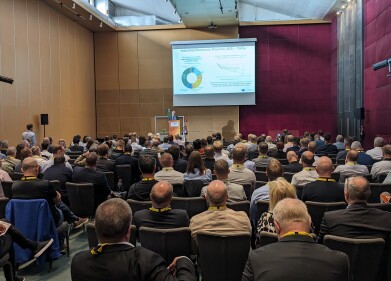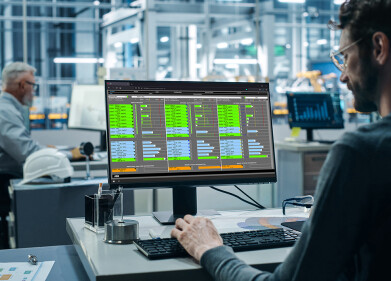Air monitoring
Vital Role for Emissions Monitoring at Thetford Power Station
May 19 2015
A multiparameter emissions monitor at Thetford power station is being used to demonstrate that the plant is performing within the conditions of its environmental permit. However, the data from the analyser, which was supplied by Quantitech (UK), also helps manage the plant. “Individual gas readings are displayed in almost real-time in the control room,” says Plant Manager Andrew Corbyn, “which enables our staff to respond quickly to the changes resulting from variations in our feedstock. This ability to continually adjust the process ensures that we operate the plant efficiently; generating the maximum amount of renewable energy whilst maintaining a good clean burn.”
The plant is the largest poultry litter fuelled power station plant in Europe. All of the plant’s feedstock is biomass and comes from sustainable sources and in comparison with a coal-fired power station, the plant makes a significant contribution to the fight against global warming.
An MCERTS approved Gasmet FTIR and an MCERTS approved FID continuously monitor all of the gaseous emissions. The environmental permit requires continuous monitoring data for HCl, SO2 and TOC (total organic compounds). Monitoring data for CO, NOx and dust are also reported, and the plant operates a second FTIR analyser to ensure that there is no possibility of expensive downtime.
Gasmet FTIR technology was chosen because of its ability to monitor multiple gases simultaneously. Operations Team Leader Richard Bloomfield says: “The system has performed very well, with very little maintenance required. Zero point calibration with nitrogen (background) just takes a few minutes each day and is fully automated. Water vapour calibration is conducted at least once per year, but under normal circumstances no other calibration is necessary.
“The Gasmet analysers are our eyes and ears; providing us with almost real-time information on conditions inside the combustion chamber. We have a display in the control room that provides recent trends in addition to the live data, so that we can take steps to ensure optimal combustion efficiency, whilst maintaining compliance with our emission limits.”
There are a number of ‘tools’ with which the combustion process can be managed. For example, it is possible to adjust the feed rate, the distribution on the grate, the grate speed and air flow from below (primary air) and from above (secondary air).
Summarising, Quantitech’s Dominic Duggan says: “The FTIR analyser demonstrates compliance with the environmental permit. However, the major return on investment for multiparameter emissions monitoring has been in the process management that it enables.”
Digital Edition
AET 28.4 Oct/Nov 2024
November 2024
Gas Detection - Go from lagging to leading: why investment in gas detection makes sense Air Monitoring - Swirl and vortex meters will aid green hydrogen production - Beyond the Stack: Emi...
View all digital editions
Events
Jan 14 2025 Abu Dhabi, UAE
Jan 20 2025 San Diego, CA, USA
Carrefour des Gestions Locales de L'eau
Jan 22 2025 Rennes, France
Safety, Health & Wellbeing LIVE
Jan 22 2025 Manchester, UK
Jan 25 2025 San Diego, CA, USA





















